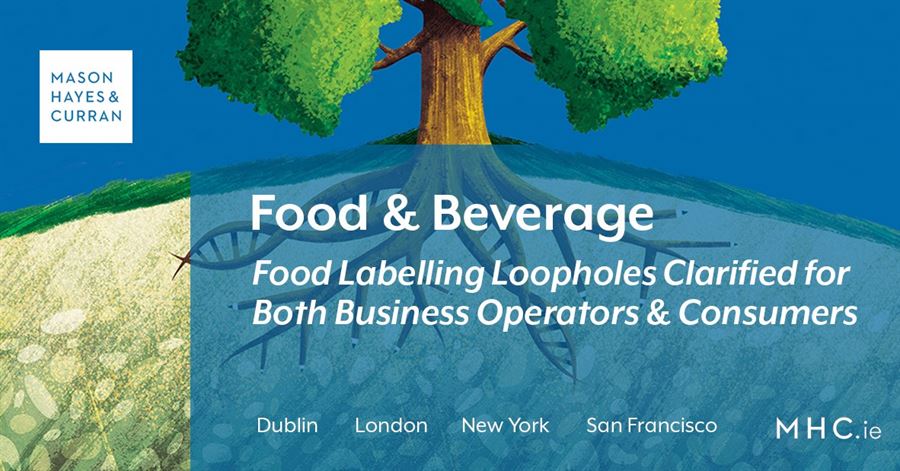
Typically, when consumers see the origin indicated on a food product, they assume that the indication refers to the ingredient rather than the actual product itself, as occurred recently in Ireland where chicken, labelled as being ‘made in Wicklow’ was in fact from outside of Ireland.
We take a look at a new EU Regulation[1], which sets out the rules for indicating the country of origin or place of origin of the primary ingredient of the food, with the aim of providing clarity to consumers as to the origin of the food. The Regulation aims to ensure that consumers are not misled and that the information provided on the label of the food regarding origin is precise and meaningful.
Scope of the Regulations
This Regulation sets out how the country of origin or place of provenance of a primary ingredient, which is different from that of the food product it is part of, must be given on the packaging.
To be clear, the Regulation does not introduce mandatory country of origin labelling for all food products: it only applies to foods whose origin is indicated – whether on a mandatory or voluntary basis – and where the place of origin of its main ingredient differs.
Labelling the origin of primary ingredients
Food business operators can choose to:
![]() 1. Provide information about the place of origin of the primary ingredient, by referring to geographical areas:
1. Provide information about the place of origin of the primary ingredient, by referring to geographical areas:
- EU’, ‘non-EU’ or ‘EU and non-EU’;
- Regions or any other geographical area either within several Member States or third countries;
- FAO fishing areas, or sea or freshwater body;
- Member State(s) or third country(ies);
- The country of origin or place of provenance in accordance with specific Union provisions applicable for the primary ingredient(s) as such.
2. Set out a clear statement to consumers (on the label) that the place of origin of the primary ingredient differs from the place of origin of the food. The statement should read: “(the primary ingredient) do/does not originate from (the country of origin or the place of provenance of the food)’ or any similar wording likely to have the same meaning to the consumer.
Other requirements
If the origin of the primary ingredient of the food differs from the origin of the food itself, this information must be presented in the same field of vision (typically at the front of the packaging so that the consumer can read it) and subject to font size/height restrictions, as the indication of the origin or place of provenance of the food.
Exemptions
Geographic terms included in customary and generic names (for example French fries, Hawaiian pizza or a Danish pastry) appear to indicate the origin of the food, but the common understanding is that these terms do not indicate the country or place of origin of the food. The new Regulation will not affect the continued use of such terms.
Additionally, protected geographical indications and registered trademarks do not fall within the ambit of the Regulations.
Food placed on the market or labelled before 1 April 2020 is not subject to these Regulations, and can be made available until stocks last.
Conclusion
This Regulation finally tackles a gap that was left in the original food labelling legislation due to the level of controversy on the issue. It is evidence of the move towards full transparency in food labelling, and the drive to increasing consumer confidence in the provenance of food products.
For more information on the impact of the new Regulations on your business, contact a member of our Food, Beverage & Agriculture team.
The content of this article is provided for information purposes only and does not constitute legal or other advice.
[1] Regulation 2018/775



